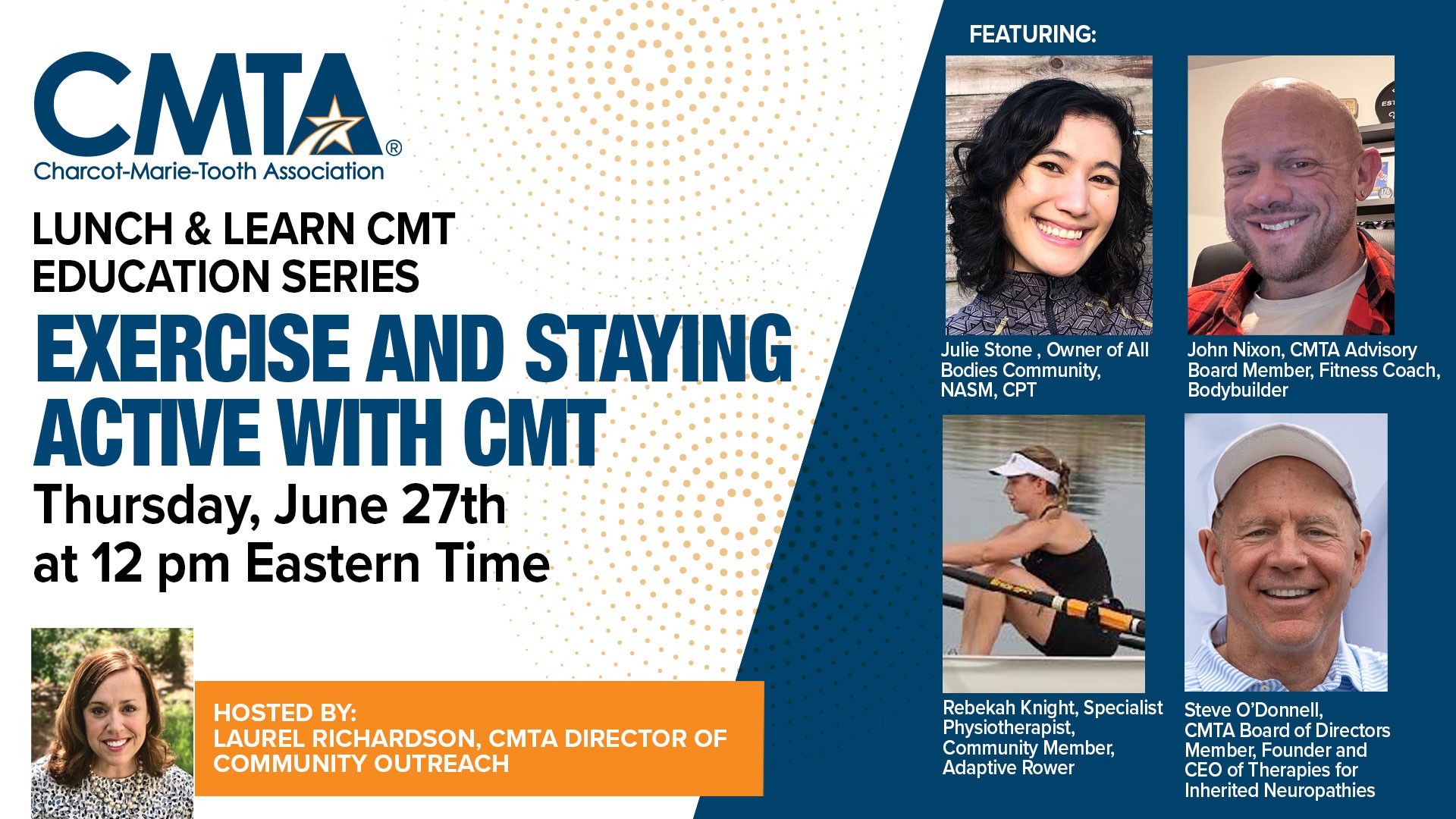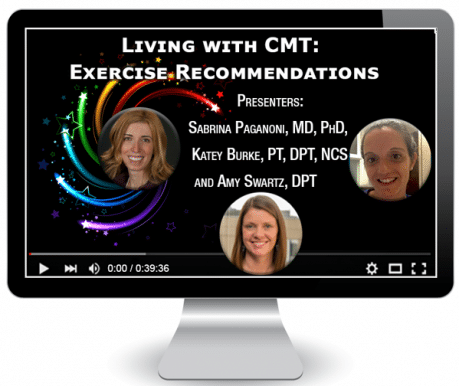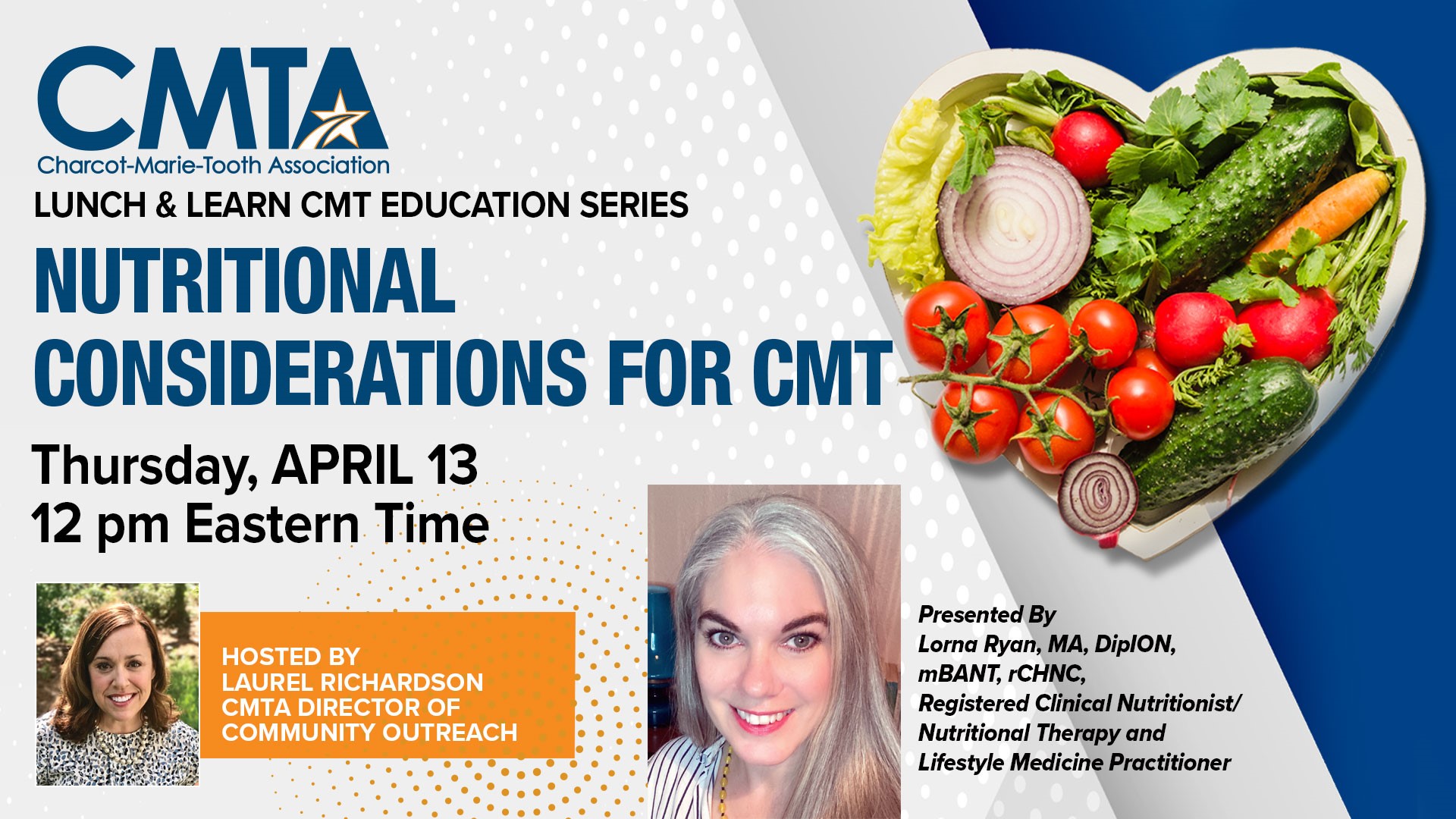The Importance of Exercise and Physical Activity for People with Charcot-Marie-Tooth disease (CMT)
Although there is no cure for CMT at the present time, the right amount and types of exercise can greatly improve the life and function of Charcot-Marie-Tooth disease (CMT) patients. The general advice for patients seeking assistance is to look first for the least invasive way to correct their problems.
The right amount and types of exercise are critical to CMT. It is important for people with CMT to maintain what movement, muscle strength and flexibility they have, but it is impossible to build up muscles already atrophied by CMT (neurogenic atrophy), so the best program works on strengthening unaffected muscles that can help do the work of those that have atrophied because of CMT. Hence, physical therapy and moderate activity are recommended. Overexertion, however, should be avoided. A physical therapist can design an exercise program that fits a patient’s personal strengths and flexibility. Exercises like the following that do not put undue stress on the joints are strongly recommended:
- Swimming
- Walking with balance walking poles – learn how to this is beneficial for CMT.
- Exercises you can do at home – for examples, watch exercise videos with Rebekah Lee, a physiotherapist living with CMT.
- Yoga
- Pilates
- Tai chi
CMTA Exercise Webinars
-

CMTA Lunch & Learn: Exercise & Staying Active with CMT
Recorded June 27, 2024

“CMTA LUNCH & LEARN: EXERCISE & STAYING ACTIVE WITH CMT”
hosted by Steve O’Donnell and Laurel RichardsonLearn about the importance of staying active and embracing exercise in our daily lives while focusing on adaptive forms of exercise, exploring unique ways to stay active, and discussing the importance of movement. All four guest speakers and our host, Laurel Richardson, director of community outreach, are CMT community members themselves.
-


Living with CMT: Exercise Recommendations
Recorded August 1, 2018

“Living with CMT: Exercise Recommendations”
presented by Sabrina Paganoni, Katey Burke and Amy SwartzPhysiatrist Dr. Sabrina Paganoni and physical therapists Katey Burke and Amy Swartz from the Massachusetts General Hospital’s CMT Center of Excellence team up to deliver best-in-class exercise recommendations for patients with CMT!
This comprehensive webinar includes an overview of the prevailing scientific literature on the subject, recent updates from the field, practical recommendations from the experts, available resources and more.
Nutrition Considerations and Charcot-Marie-Tooth disease (CMT)
Nutrition and CMT Webinars
-




Nutritional Considerations for CMT
Recorded April 13, 2023Lorna Ryan shares how nutrition may support symptoms of CMT and discusses the latest research and critical questions around dietary and supplemental needs. Learn how to safely implement nutritional management strategies without strict dietary protocols for improved health outcomes living with CMT.
-




Managing CMT Symptoms with Nutrition
Recorded April 1, 2021

“Managing CMT Symptoms with Nutrition”
with registered dietitian Sara Kevern
hosted by Elizabeth OuelletteSara Kevern, a registered dietitian and nutrition support specialist at Stanford Health Care and Stanford Children’s Health, discusses how to best adjust your diet to manage CMT symptoms. Now a member of the CMTA Advisory Board, Sara joined the Stanford neuromuscular team in 2019 to inaugurate and build nutrition services, and she works as part of the multi-disciplinary clinic with both adult and pediatric CMT patients to help optimize their nutrition.
Are vitamins, antioxidants, and supplements good or bad for CMT?
There is little research on the effects of vitamins on CMT.
Alpha Lipoic Acid
Alpha lipoic acid is an antioxidant that has been studied mostly in patients with diabetes. There is some objective evidence that it reduces painful symptoms, but it is not clear if it prevents nerve damage. The agent has not been studied in CMT, to our knowledge, and it is important to know that the mechanisms of nerve injury differ between diabetes and CMT.
Amino Acids
L-histidine is an essential amino acid that is supplied in adequate amounts in any good diet. To our knowledge, there are no studies using L-histidine in patients with neuropathies and none in hereditary neuropathies.
B Vitamins
Taking too much B6 is bad. Other than B6, the B vitamins have no known risk. There is no known association between biotin and neuropathy. The only B vitamin clearly known to cause neuropathy from excessive use is pyridoxine (B6). However, all vitamins should be taken in conventional doses unless otherwise directed.
Collagen Peptides
As far as we know, collagen peptides should not pose a problem.
D Vitamins
There is no evidence that Vitamin D helps alleviate the symptoms of CMT. However, if you are Vitamin D deficient, discuss supplementation with your doctor.
There is no known risk of taking other vitamins as long as you don’t take megadoses of these supplements. A megadose is 10 times or more the recommended daily amount.
Lecithin Supplements
In August 2018, it was reported that the dietary supplement lecithin improved the myelination of diseased Schwann cells. The study showed a modest improvement in the rat model of CMT1A but has not yet been duplicated.
Ultimately, if you choose to take a lecithin supplement, you would be wise to consult your doctor in order to establish a safe dosage. Care should be taken if there are any allergies to eggs or soy, as these are often sources of lecithin supplements.
Herbal Supplements
We know of no suspicious or theoretical problems with magnesium citrate or calcium lactate. There were a few reports of sudden neuropathy with St. John’s Wort in the late 90s, but very little since then. Podophyllin resin is clearly neurotoxic and is contained in certain roots used in Chinese herbal remedies, but it hasn’t been used in Western supplements since the 1980s. One problem is that the full ingredient list in some herbal supplements is not available, accurate or required.
Page Last Updated: November 13, 2024





